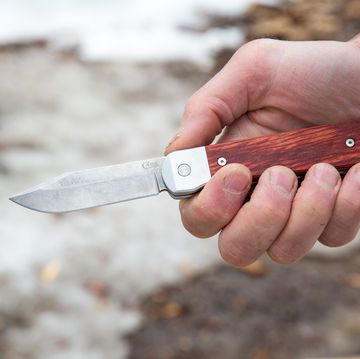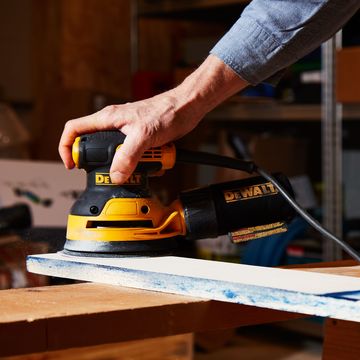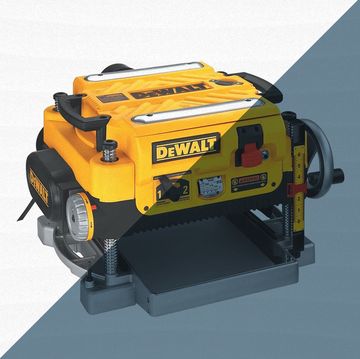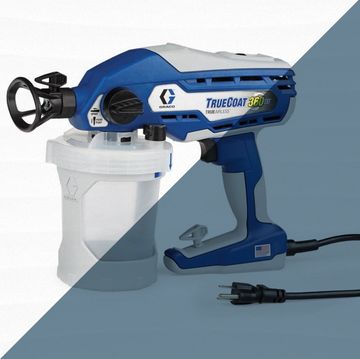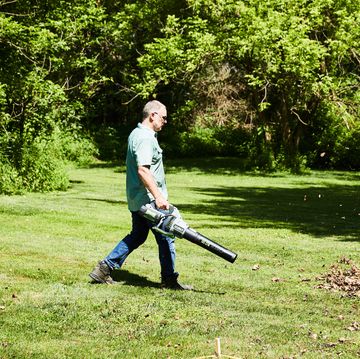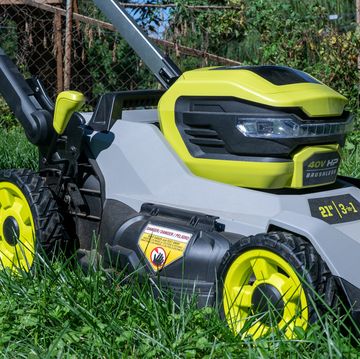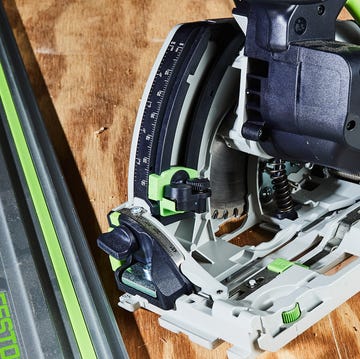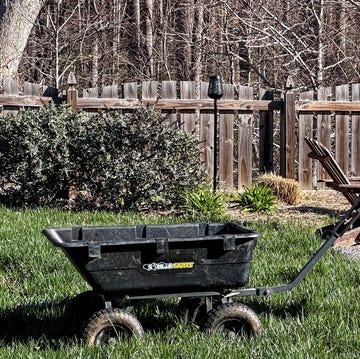The Black & Decker Workmate 425 ($150) has been a staple in garages and basement workshops for years. As one of the flagship tools of the DIY revolution, it has become the standard of clamping workbenches. But recently the tool world has seen a new style of three-legged workstation hit the market. The Rockwell Jawhorse ($177) is not the first of its kind (it's modeled after the Triton SuperJaws out of Australia). But it is the first of this type to gain widespread recognition in the U.S. While the Workmate clamps stock between the movable slats of a small table, the Jawhorse boils down to a single massive clamping jaw operated with a foot pedal.
Curious as to how this aggressive upstart compares to the old standard, I ran a series of tests. Three simulated actual tasks and a fourth ascertained the stability of the tools. For the tests, I used the latest and most feature-laden version of the Workmate, the 425. In the red corner, wearing the blue trunks, was the Rockwell Jawhorse.
Test No. 1: Clamping a Glue-Up
For this test, I simulated gluing together two pieces of poplar. I marked the pieces, applied the glue and clamped them in each tool. I lined up the marks, making sure that the top surfaces of the pieces were in the same plane.
Jawhorse: Because the clamping is controlled by a foot pedal, I had both hands free to position the pieces as I locked them together. Small adjustments could be made by releasing a little weight from the pedal. Then, when everything was perfect, a quick press on the pedal and a flip of the locking switch made a tight, seamless joint.
Workmate: Because the Workmate has two hand cranks that control the clamping, it was more difficult to adjust the pieces. Luckily, the poplar could sit on the Workmate's tabletop while I clamped, so I paid less attention to lining up the pieces' top edges. I could connect the marks I'd made, but I had problems aligning the plane of the pieces. I realized that the two clamping boards on the tool itself were misaligned by about 1/8 inch. If they had been on a single plane, I could have relied on them for alignment. But as it was, I had to float the poplar pieces in the clamp, keeping them entirely off the table. It made the work much more difficult.
Winner: Jawhorse
Test No. 2: Ripping Plywood
For this test, I took a 20-inch-wide piece of 1/2-inch plywood and attempted to cut a 6-inch strip off the edge.
Jawhorse: A series of optional accessories released since the completion of this test allows the Jawhorse clamp to manage sheet goods, logs and welds. In fact, the Work Table accessory bears an uncanny resemblance to the Workmate surface. But this test used the base model with no separately sold accessories. In its standard form, the Jawhorse only clamps horizontally. So the only way I could position the wood for the cut was with the piece positioned vertically. Running a circular saw against a vertical surface isn't exactly the safest thing to do, so I called it quits and moved on to the Workmate.
Workmate: An interesting feature of the 425 made this procedure simple and easy. The front clamping plate can shift up to the vertical position and clamp down against the table. I was able to quickly secure the plywood and make the cut. The only caveat here is that the clamping plate sits about 7 inches out from the clamping point. Cutting anything shorter than that isn't recommended, unless you want to cut the table in half.
Winner: Workmate
Test No. 3: Soldering a pipe
For this test, I clamped a 1/2-inch copper pipe in each workstation and went about the business of soldering a connection to it.
Jawhorse: I was worried that the Jawhorse would crush the pipe, but for something that can clamp so tightly, the Jawhorse can also be very delicate. The clamping jaws come with both vertical and horizontal grooves that can position the pipe. Unlike the Workmate, I only had the narrow back rail of the Jawhorse to use as a work surface. It was usable, but the uneven surface had me worried I'd knock something over.
Workmate: Grooves in the Workmate's clamping plates stabilized the pipe in the horizontal position, but it had a little trouble with the round shape of the pipe in the vertical position. It held enough for me to solder the connection, but any bump would shift it in the vise. The Workmate gave me a nice surface to store my solder, flux, connections and brush while I worked.
Winner (as vise): Jawhorse
Winner (as worktable): Workmate
Test No. 4 Stability
To test the stability of the three-legged Jawhorse against the traditional four-legged Workmate, I clamped a 2 x 4 in each, cantilevering it off the end by about four or so feet. Then I moved a cinder block incrementally down the 2 x 4 away from the tool, marking the point where the load became unbalanced enough to tip the whole thing over.
Workmate: I tested the workmate first and the tool hit the floor with the block at the 17-inch mark. It was a decent amount of weight, so I thought the result was satisfactory.
Jawhorse: When I did the same experiment with the Jawhorse, the Workmate seemed less sturdy. This tool allowed the cinder block to scoot all the way to the 35-inch mark before toppling to the floor.
Winner: Jawhorse
Conclusions
If you were to compare these tools with a pie chart, the Jawhorse would be 95 percent clamping and 5 percent worktable. The Workmate would be more like one-third clamping, two-thirds worktable. Because virtually every aspect of the tool is devoted to its ability to clamp, the Jawhorse was dominant in that arena. The Workmate had a weaker clamp that was more awkward to use, and the misalignment of the clamping plates was a real disappointment. But it did manage to complete all of the tasks in some form (even one that the Jawhorse couldn't) as well as providing a nice flat work surface. So as a stationary workbench, the base model of the Workmate has more versatility. As far as raw clamping is concerned, it's a distant second to the Jawhorse.


